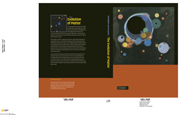Book contents
- Frontmatter
- Contents
- Introduction
- Part I The elements
- Part II Early solar system: nebula formation, evolution and lifetime
- Part III Accretion of the Earth
- 14 Introduction to the planetary system, Earth and Moon
- 15 Introduction to planetary accretion
- 16 Earth accretion: the giant impact(s)
- 17 The post-accretion silicate Earth: comparison with meteorites
- 18 Core segregation
- 19 Heavy “crust” on the top of the core
- 20 The early atmo-hydrosphere
- 21 Light from the Moon …
- Part IV Global evolution of the Earth
- References
- Glossary
- Abbreviations
- Meteorites, rocks and minerals
- Index
20 - The early atmo-hydrosphere
Published online by Cambridge University Press: 04 September 2009
- Frontmatter
- Contents
- Introduction
- Part I The elements
- Part II Early solar system: nebula formation, evolution and lifetime
- Part III Accretion of the Earth
- 14 Introduction to the planetary system, Earth and Moon
- 15 Introduction to planetary accretion
- 16 Earth accretion: the giant impact(s)
- 17 The post-accretion silicate Earth: comparison with meteorites
- 18 Core segregation
- 19 Heavy “crust” on the top of the core
- 20 The early atmo-hydrosphere
- 21 Light from the Moon …
- Part IV Global evolution of the Earth
- References
- Glossary
- Abbreviations
- Meteorites, rocks and minerals
- Index
Summary
Introduction
The major elements in the Earth's atmosphere and hydrosphere, H, N, C and O, are highly reactive and also play major roles in solid-Earth evolution. Thus the noble gases are the most suitable tracers for early atmo-hydrosphere processes.
The sources of non-radiogenic noble gases in the Earth's interior are reasonably well understood: these include the accreting bodies of chondritic composition that delivered “subsolar” noble gases to the Earth–atmosphere system (in abundances similar to those in E-chondrites), and/or mixed materials such as C1 chondrite-type matter bearing Q gases along with grains containing implanted solar noble gases (Chapter 28).
The present-day abundance of noble-gas isotopes in the atmosphere could have developed via (1) fractionation of the initial composition during early loss event(s) and (2) the addition of radiogenic or fissiogenic isotopes, transferred to the atmosphere from the planetary interior. Comparison of the subsolar noble-gas isotope pattern, seen in the Earth's mantle and postulated as the initial one for the atmosphere, with the present-day atmospheric abundances of unradiogenic isotopes reveals an elemental and mass-dependent isotopic fractionation of the atmospheric gases. Therefore adequate models of atmosphere-loss mechanisms must account for these features (Section 20.3).
The inventory of radiogenic noble-gas isotopes, first of all the 129I–129Xe(I) and 136Xe(Pu)–244Pu systematics, indicates a major loss of atmophile elements, even as heavy as xenon, from the Earth's and the martian atmospheres and also presents rough estimates of the relevant time scales (Section 20.2).
- Type
- Chapter
- Information
- The Evolution of MatterFrom the Big Bang to the Present Day, pp. 250 - 266Publisher: Cambridge University PressPrint publication year: 2008



